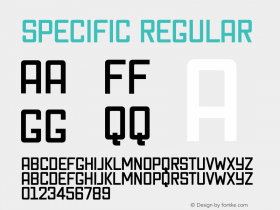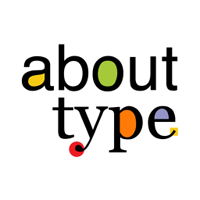
The past few days a type hype has been spreading like a wildfire through the Twitterverse. So You Need A Typeface is a project by Julian Hansen, a graphic design student at the Danish School of Media and Journalism in Copenhagen. It is an alternative way of choosing fonts (or simply find inspiration) for a specific project, not just by browsing through the pages of FontBook. The list is (very loosely) based on the top 50 of the Die 100 Besten Schriften by FontShop.
Julian's interest in typography was sparked when attending a course in graphic design at Krabbesholm Højskole in 2007. His teacher had very strong opinions about typography, and was vocal about exactly which typefaces he liked and which he didn't. At that time Julian couldn't really figure out why, but nevertheless it fascinated him that typefaces could generate such passion. After his teacher had shown the Helvetica movie in class, Julian started to study Helvetica and Arial, to be able to tell the difference between the original and the clone. Soon afterwards he began substituting bedtime novels for books on typography, like Stop Stealing Sheep & Find Out How Type Works and The Elements of Typographic Style. Nowadays the only big yellow FontBook in his class usually can be found on Julian's desk.
Click the image to see the full-size graphic.W A R N I N G– I foolishly linked to the wrong version of the graphic, so if you downloaded it before Saturday, April 24, please click the image again to download the correct version.
The So You Need A Typeface poster started as a school assignment. To round off the "Research-based Design" course Julian's class were told to each define his/her own graduation project. Julian found inspiration in the problems he often encountered when trying to find the right typeface for a design. Instead of simply browsing through type specimens, Julian wondered if he could come up with something more rational, a systematic approach. His project took the form of a flowchart on a poster. Studying different type finders made him come to the conclusion that selecting type really could be a matter of taste – does Helvetica look like dog shit in text? Paul Rand may have thought so, but Experimental Jetset or Josef-Müller Brockmann would disagree. This made Julian decide that his poster should not only be useful, but also be light-hearted and make fun of stereotypes. This made him throw in options like "is it an Italian restaurant?" for instance. His ultimate goal was to show that typefaces convey a whole lot of meaning that "ordinary" people just don't see.

The scenario that led to the selection of the typeface used for the poster.
Figuring it would be presumptuous to compile himself the selection of typefaces for the flowchart, and also inspired by a lecture by Jan Middendorp, Julian chose to use FontShop's Die 100 Besten Schriften (even though Jan Middendorp argued that there was no such thing as a Top 100 of typefaces). Julian researched useful facts as well as fun ones, and combined them with various sayings about type. For example, having been teased by the typography teacher who was adamant that FF Meta belonged to the nineties, Julian incorporated this in the flowchart. The adage "When in doubt use Caslon" helped him get to the classic serif face. And when he couldn't come up with a good question to distinguish Syntax from FF Scala, he eventually realised it was in fact the distinction between Switzerland and the Netherlands, so his question ended up being about Gouda and Emmentaler cheese.
While it may not be the definitive flowchart for type selection, Julian Hansen's poster offers a slightly warped peek into the brain of the graphic designer who is in the process of determining what typeface to use for a specific design. The end result is both interesting and amusing, and is a good primer for type novices. So far feedback – also from non-designers – has been very good and encouraging. Julian confesses it was especially nice to see Erik Spiekermann tweet the flowchart. He also received requests for translations to Spanish and French, something he certainly didn't suspect would happen while he was still designing it. It is probable we have not seen the end of this project yet.









